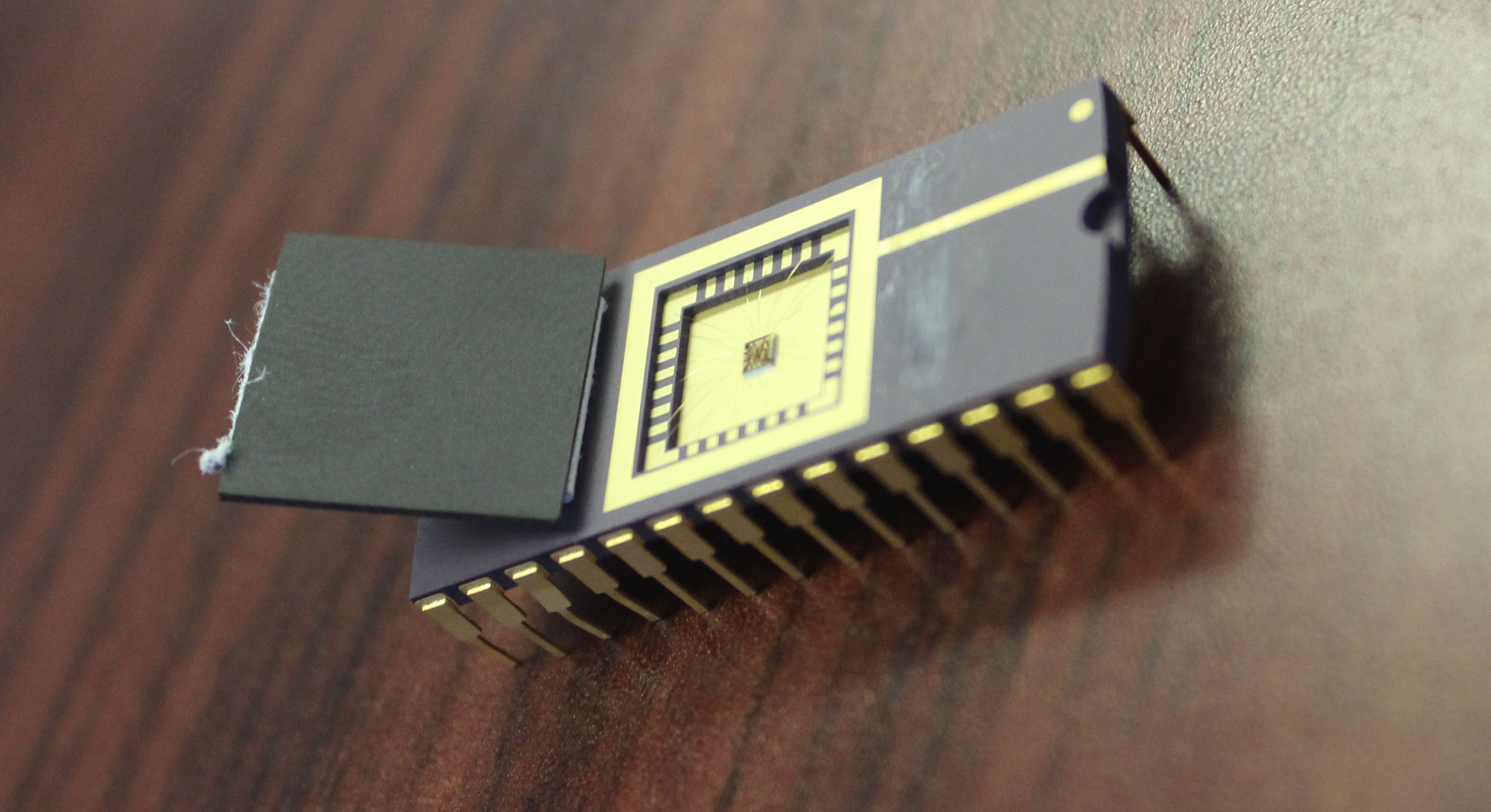Introduction
The DM6350 is an integrated circuit designed and tested by the students Daniel de Godoy Peixoto and Miguel Costa for the course EE6350 - VLSI Design Lab taught by Prof. Peter Kinget at the Columbia University Electrical Engineering Department during the spring of 2014.
The goal of this course is to develop the main skills of IC design, as well as expose the students to practical aspects of this process. Under supervision, students were required to do all the steps of the chip development process: defining the application and specifications of the IC, system and transistor level simulations, layout, parasitic extraction and post-layout simulations, tape-out to the foundry, and finally experimental verifications on the fabricated IC. The chip fabrication was donated by MOSIS under their educational program.

The chip presented here provides
an interface between an ultrasonic
transducer and a microcontroller. Its main
function is to convert the input information, in
this case ultrasonic signal, to 1's and 0's that can easily be interpreted by the
microcontroller. More specifically, the DM6350, when used in the architecture
that will be presented here, generates a logic transition at its output pin
whenever an ultrasonic signal is sensed. The ability to trigger on this event,
combined with the time reference provided by the microcontroller, is then used
to measure the distance to the nearest object. Based on when the ultrasonic signal
left the source and when the transducer senses
its echo the distance can be extracted, assuming a constant speed of sound.
Since the goal of this course was to develop practical skills in IC design, and
considering that only one academic semester was
available to design, layout and tape-out the
chip,
robust design techniques
were chosen at the
system, transistor and layout
levels. The students' primary concern, on this first chip developed, was to make
it functional.
